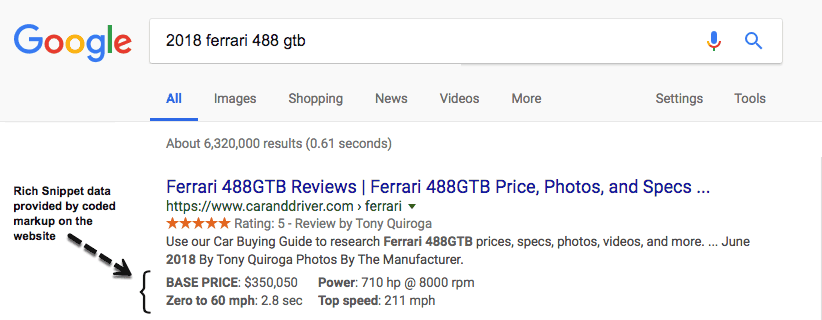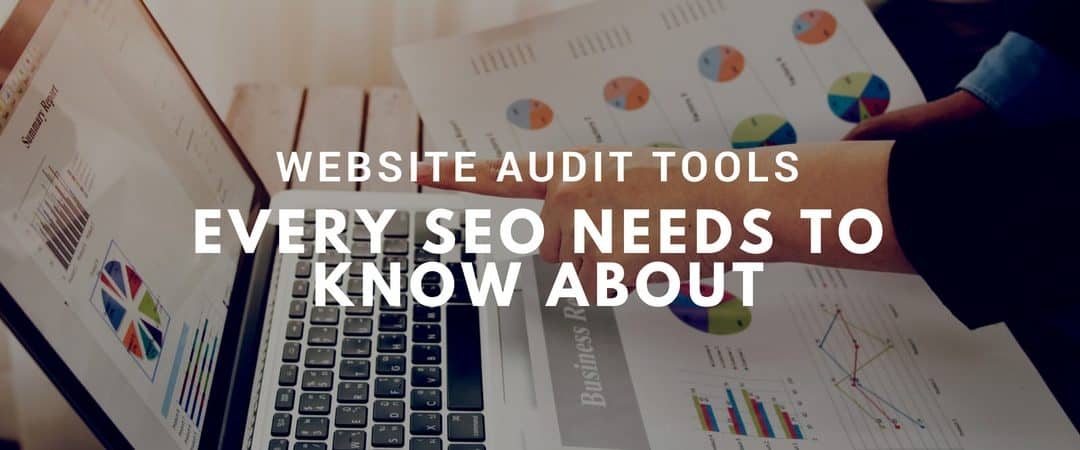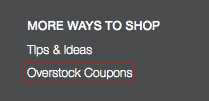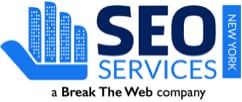
Jason Berkowitz, Founder, SEO Director
The Almost Indescribable Connection in Web Semantics
There’s a more substantial literal connection being made with SEO technology, and this factor takes into account the meaning or intent of the user’s search. These details can’t be overlooked when you’re maximizing on your SEO campaign and generating more organic traffic. You might find this connection a bit difficult to get your mind around.
Welcome to the club.
The dynamics of semantics in SEO brings what we knew about keywords, and user queries to a level that’s now being led by artificial intelligence. You have every right to be confused, and you’re in the right place if you’re looking for answers. Getting a boost in your online marketing begins by understanding how it works.
The developments of semantics give search technology a new world of understanding.
Let’s take a look at what Webster Dictionary says about it.
Semantics is:
“1: the study of meanings: the historical and psychological study of changes in words or forms viewed as factors in linguistic development.”
“3: the meaning or relationship of meanings of a sign or set of signs; especially: connotative meaning.”
These definitions bring us to what Google did in the mid-summer of 2013.
The search engine titan released their Hummingbird algorithm for the reason of semantics. The many schemes that played on the search engine’s limitations in matching words had almost immediately lost rank. Search engines now understand the content and the user’s search based on intent. Words that “match” play less of a factor.
Let’s now cover why Web technology can do this without it having a human brain.
A Look At The Knowledge Graph
The knowledge graph is a Google feature that brings together a full spectrum of data. This graph attempts to organize information but not just in the way of crawling. Crawling occurs in content when search engines gather newly uploaded content. The knowledge graph instead organizes concepts and themes prior to searches being made.
Think in terms of the U.S. Presidents.
Organizing all of the existing U.S. Presidents allows the search engine also to find data that these presidents have in common. One would be a map of the United States, the election year and a four-year tenure. This is an example, yet we have historic architecture, famous artworks and popular foods that can all be categorized.

Having this organization through the knowledge graph is the first step into seeing how semantics can expand through the limited understanding of search technology.
– A Look At Google’s Patent For Entities
Google was granted a patent for entities in April of 2018, which it uses to describe the relationship between things within its knowledge graph. The key to making entities work for Google is in pre-stocking its own database. There are a few factors that each entity has, and this becomes the foundation of how Google semantics works.
The attributes giving to entities include the kind of entity, an identifier granted to that specific entity, a place given within Google’s data hierarchy, a key name string and a numeric ID. These factors are assigned to entities in order to identify some of the ideas that a search user might have. The more that Web technology connects how we use language and why, the quicker it can provide a relevant response.
– People, Places, and Things
Entities can also be categorized as people, places, and things. This requires that search engines are uploaded with a wealth of knowledge prior to a user searching. This data, however, has to gain a few attributes to enable technology to find key relationships and to established predetermined definitions.
Why Is This Important?
The troubled technology has when understanding human vernacular is in the nuances we have. Those nuances occur when we say, “It’s money in the bank,” for example. It’s important for semantics to understand this as another way of saying a goal is accomplished or achieved. It has no actual relation to money or a bank in most cases.
It’s these complications that arise when search technology is limited in understanding a search query if only matching words for words. We see the same complication arise when we consider how wordplay is used.
Using Schema, Metadata, Titles, and Subheads
There are a few ways to take advantage of semantics. Your first step is to optimize your content or site with concise information that can be processed by a direct literal translation. It’s clear that Web technology has limitations. You can give it a hand with a few popular options:
– Rich Snippets:
Snippets are the result of properly using Schema markup that enables you to present search engines with more data about your content, who it’s for, what it covers and how much in-depth it goes. A rich snippet appears in search engine result pages (SERPs) as content extracted from a page that has an answer to your question within search.

This process can be done by formatting your headings into questions and then thoroughly answering each with in-depth data. Search engines can pick up that data and provide a snippet to the reader who doesn’t have to access the page to get their answer.
– Content:
Getting the most out of semantics can also be done through content. This requires that you cover a topic from every angle and that you submit longer forms rather than short. You have to then go into the topic with a definitive mindset in an attempt to define what you’re talking about without any confusion.
Be reminded that search engines are still limited though now operating on advanced technology. Help this technology by limiting phrases that could mean multiple things. Be direct and straightforward, and try not to be too creative with wordplay. You want your content to rank with entities that are already established in a search.
This enables your content to be crawled and immediately identified without ambiguity.
Understanding The Query
Web semantics goes further by making decisions on usage. The world is typing various ideas and concepts into search engines right now. Artificial intelligence enables those searches to become the basis of computed learning. Two categories of AI programming exist as machine learning and deep learning.
These are environmental learning functions that take from events, save that data and then makes an adjustment to it. This is what’s happening as some topics trend while others are getting less attention. The final objective of search technology is to provide the user with something useful regardless of semantics or entities.
Here are a few factors to consider when leveraging how Web semantics analyzes content.
– Habits:
Some Web surfers spend an average of 10 minutes on a page regardless of how engaging it is. Others spend three or 20 minutes. These behaviors leave footprints that can be picked up and used to verify the intent behind the next search query.
– Search History:
Web technology looks for patterns and trends. It will then make suggestions when using a Google or Chrome account. The challenge of human semantics is reduced when Web technology has a long history of what a specific user is looking for.
Bringing It All To Closure
There’s a lot to consider when creating the perfect SEO campaign. Your content has to take into account how semantics works in order to maximize on it. Always keep in mind that what we understand as ironic and catchy could be difficult for Web technology to render.
The summer of 2013 brought in a special era for search engines, but there are still some limits. You can overcome the limits by knowing your readers. Create content that speaks to them, and then the questions they ask are likely to match up. Use your headlines and titles to make up for any shortcomings in web technology.
There’s traffic online right now, and you can grab it by understanding semantics.

Jason Berkowitz, Founder, SEO Director
I’ve recently noticed all my Mondays seem to blur into one gigantic day, where I do the same thing over and over again.
That is because Mondays are audit days, (so are Wednesdays, but that’s another matter).
Every Monday, I ignore all the email that has piled up during the final hours of Friday and over the weekend, I open up a browser dedicated to audits alone, put my headphones on, and dive right in.
Luckily – I really enjoy doing audits. Otherwise, I might have lost it at some point but doing a website audit is like playing at archaeology and being a detective at the same time. Was that an Indiana Jones reference just now?
Over the years, I have acquired a very trustworthy arsenal of tools I rely on to do the actual digging for me. Now, I know we all have our favorites, and we may prefer one or the other, but nevertheless, here is my take on the audit tools every SEO should at least be familiar with. Note that there is no particular order or method to the list.
Google Analytics & Google Search Console
Let’s start with the obvious duo.
The first thing you need to do is jump into Analytics and Search Console, and analyze the traffic, the traffic sources, the landing pages, user behavior, dwell time, bounce rate, keywords, rankings, and all that fun stuff. Know your bases before you actually move on to any other tool.
Some SEOs tend to neglect this first step I often find – but the best place to start an audit is always analyzing what you already have, and the best place to do that is at the most reliable source. While all the other tools I list are great – they can never be as accurate or as trustworthy as your own Google duet.
Another good thing to do now outlines a list of improvements and ideas you have arrived at just by looking at this raw data. The tools will help you come up with more, certainly, but your own experience and imagination are what will turn that data into actionable steps. Knowing where to find the data is one thing – knowing what to do with it is another matter entirely.
Woorank
Woorank is a great all-in-one tool if you are looking for a quick and straightforward way to find out how to improve a website. It analyzes over 70 metrics (including SEO and social signals) and will certainly set you off to a good start.
The downside of Woorank is that the data it offers is just a bit too broad, and not always detailed enough. Each segment it focuses on can be analyzed with a dedicated tool, but for a quick audit, there is no better option.
If you are looking for something more in-depth, however, you will need to use a few other tools as well.
ScreamingFrog
More of a crawler than an audit tool, ScreamingFrog is an SEO’s dream. While the interface may not be exactly pretty, the data it can help you uncover is endless, if you know how to use the crawler, and how to interpret the data you are given.
The tool can scrape any website and provide data that would take ages to compile manually. Think in terms of redirects, broken links, metadata, word counts, titles, and so on. It can also help you uncover thin pages and weak content and is overall a great on-page analysis asset. (Quick shout out to Sitebulb here, I have started using this at the start of this year and it might make SF redundant)
SEMRush
Another all-in-one sort of tool, SEMRush has an audit feature that will give you data to work with (albeit rather basic), including meta and title suggestions, link building prospects, and content ideas.
Its content audit feature is also useful, and can help you run through your pages quickly, and offer some truly valuable insight into the fixes available.
Another way to use it is for competitor research – the data it uncovers is rather different than what the tools listed just below offer, so it can be a fun endeavor to compare the results you get from each.
Ahrefs vs. Majestic vs. Moz
There is a never-ending debate in the SEO world about the winner in this battle.
While each of us has a clear favorite, all of these tools are great for certain parts of the audit you are performing.
Admittedly, you can do without Moz. Their spiders and crawl power are no match to Ahrefs – but they are just relaunching their Link Explorer feature, so it would be good to keep an eye on the developments.
Majestic has a unique Trust Flow metric, which is quite different than the domain rating/authority of the other two. It is also great for doing bulk website analysis, link audits, and can often pick up things Ahrefs won’t. Use it to check backlinks and for potential link prospecting.
The current leader of this pack for me is Ahrefs – with the features they keep adding, you could rely on their tool alone for your audit.
It can help you do keyword research, offer ranking insights, backlink analysis, their content explorer is great for working on content marketing ideas, their audit feature is also an all-rounder, it offers insight on anchors and competing pages – all in all, a great tool to have in your arsenal.
Copyscape
Speaking of content audits, Copyscape is another tool you need to be familiar with. It will help uncover any duplicate content your website might be dealing with – always an important fact to check.
Google Keyword Planner
Moving on to keywords and associated tools, the obvious place to start (apart from the Search Console) is Google’s Keyword Planner. While some argue this is the most accurate data you can find, you should not forget that this tool is designed for paid, not organic search, so the results you get may not be applicable to your SEO campaigns.
Another downside is that only accounts which spend a significant amount on advertising will get the most precise data – accounts with no spending will get a very broad range of results.
WordTracker
When Keyword Planner fails, there is WordTracker. Hailed by the NextScoop as the best keyword research tool out there, it is undoubtedly a great resource – it provides results in minutes, and the data it uncovers is genuinely useful. Remember to always refer back to your Search Console, to see how your efforts are paying off though.
There are also dozens, if not hundreds of tools that offer an SEO audit feature – some of them are free, others require payment, but most of them will only offer a very broad picture. They can be a great place to start, but a proper, in-depth analysis requires more manpower and more tool power.
Which tools do you use to do your audits?

Jason Berkowitz, Founder, SEO Director
When developing a unique SEO campaign strategy, a competitive landscape analysis is one of the foundations for the final plan. A look at the competitors that are actively ranking/pursuing specific search terms provides valuable insight into the eventual development of the SEO campaign.
We’re not fixing the wheel here. If a data point on your competitor’s website is working for them, it’s likely it’ll work for you, as well.
But how far can this go? How much can you look at competitors, especially the big conglomerates, and rely on their data? How do you even know if the on-page optimization they’re doing is also correct?
In a world of search results giving favoritism to large industry authority sites, our initial instinct is to believe that these websites have their SEO teams up to par. We’re expected to believe that their multi-million dollar budgets can afford to ensure they have the elite strategies behind them.
Unfortunately, this couldn’t be further from the truth.
Being local to New York City, I’ve had the advantage of collaborating with some of the top enterprise businesses in the city. Companies for brands we all use every single day. I’ve been brought in by these companies for SEO consulting & training, in-depth technical SEO audits, advisory roles & more. Much to my own surprise, the knowledge of SEO within these companies was severely outdated.
What I’ve Noticed…
Many of the Fortune 500 companies had what I’ll call “scattered marketing.” What this means is that their marketing team didn’t have a proper handle on all of the different forms on marketing, and instead of dedicated select team members to different platforms/marketing strategies, the entire in-house teams we’re doing everything.
One specific Fortune 500 company based in the city comes to mind when I think of scattered marketing. This company, which is considered to be among the largest life insurance companies in the world (estimated $800million profits in 2017), had days of the week dedicated to specific forms of marketing. Monday was Paid Advertising review & optimization; Tuesday was Search Engine Optimization; Wednesday was reconfiguration and audit of email marketing blasts; and so on.
Since they have the resources to maintain a full-time, dedicated in-house marketing team, there was no other reason than straight consulting as to which SEO Services New York could have been useful. They just needed guidance and the proper advice as to what’s taking place in a legit SEO campaign, that’s focused on results, longevity & ROI.
Big Brand (Bad) SEO in Real-Time
I’m not one to start controversy and begin bashing companies in hopes of minor publicity. It was simply to prove a point that they don’t always have their $#*! figured out and this should be accounted for in the strategy development. The point I’m going to share was reviewed with well-known industry colleagues who, as well as myself, had no proper explanation as to why.
If you know why… comment below, and I’ll edit the post to include your comment and a link back to your website.
I was researching for a prospective e-commerce client, and I was shocked to see what the footer of Overstock.com looked like:
 click to enlarge in a new tab
click to enlarge in a new tab
Now, the red boxes… I have a Google Chrome browser extension that automatically highlights “nofollow” links. When a hyperlink in a page has a nofollow tag associated, it’s automatically given a red box.
For more information on nofollow links, here’s Google’s explanation.
When it comes to on-page SEO, we know that internal linking is a tremendous asset. It’s extremely important, and more importantly, the text of the links play a huge role. Given the nature of Overstock.com, I would think that there are many opportunities for them to take advantage of high volume search terms.
For example…
We would think Overstock would like to rank high on Google for the search term: “Overstock coupons”. This is a search term that brings in roughly 75,000 searches per month.

Unfortunately, at the time of this post, they’re sitting at #6 for that specific search term. I wholeheartedly believe that the removal of the nofollow link in the footer menu will give them positive results in the search engines.

This example could be shown for a few other of the items listed in their footer.
On The Other Hand…
Overstock.com does have history specifically regarding their SEO tactics. In 2011, they were penalized for using link schemes and maybe in their attempt to ensure they don’t ever get slapped; they’re taking overcautious measures.
What Do You Think?
Comment below if you think you know why Overstock.com is doing this. Have other examples of big brand (bad) SEO? Comment below.

Tammy Delvecchio, Marketing Associate
Just like any other industry, the SEO game is always evolving. Google and other search engines continue to develop their algorithms to make the rules of the game as fair to every participant as possible. Thus, some tactics that were a gold mine yesterday are considered rule-breaking today.
Most, if not all of them, are now called black-hat SEO techniques. The term black-hat pertains to activities that would penalize your site because it focuses more on bringing in people and improving site traffic than maximizing their online experience. In short, it focuses more on reeling in than giving back.
Here are some tactics that are no longer relevant to today’s SEO climate:
Keyword Stuffing/Over-optimization

Description:
An act of injecting too many relevant keywords in one page so that it appears on higher rankings in the search results.
Why it is no longer used today:
Websites that use overoptimization would tend to focus mostly on stuffing as many keywords as possible, often inconsiderate of the grammar or how bad it looks on the page. This action renders the content useless or invaluable to the online user searching for answers.
Rise above it!
While keyword stuffing is now an illegal act, it does not mean that you cannot use keywords to up your chances on search engine rankings. The key is to use it responsibly and focus on the overall user experience than your website rank.
Putting Keywords In Bold

Description:
This one is somehow related to the first item, except that instead of stuffing keywords, you put selected number of keywords in bold.
Why it is no longer used today:
Much like the keyword stuffing technique, most website makers abuse these feature as well. Matt Cutts cleared the air by stating that while it is not harmful to employ it, putting bold keywords does not affect your overall search rankings.
Rise above it!
Instead of wasting your time in peppering bold tags all over your page, focus on building relevant content. This would put you on Google’s right side.
Spammy Page Titles

Description:
It is like keyword stuffing but on page titles rather than on the page content itself.
Why it is no longer used today:
Page titles should be used to point users to what your content is all about. It is NOT another opportunity to use black-hat techniques in the search rankings.
Rise above it!
Instead of stuffing keywords, try to make your page titles as witty or relevant as possible to entice users to click the bait.
Meta Information (Descriptions & Keywords)

Description:
Meta information or meta tags are hidden keywords on your page that website developers use to point online users to their site. By upping the page visits, you can raise your search rankings as well. Meta info also includes the description seen the title page results.
Why it is no longer used today:
Like other techniques, meta tags are highly prone to be abused. In fact, it is more dangerous than other on-page tactics because users cannot see it unless they view the page source. Meta descriptions can also be manipulated to bait users to click the site without having any idea what the page is about.
Rise above it!
Even though Google does not use meta information as a parameter for their rankings, you can still benefit from it by making the keywords and descriptions as relevant as possible to your niche website so that you can gain the search engine’s trust.
Spammed H1 Tags

Description:
H1 tags are used to point users to what your page is all about. Website developers usually put H1 tags on the titles of each article. Thus, putting lots of keywords in it makes perfect sense…for search engine penalties.
Why it is no longer used today:
These tags are another way for website makers to stuff in as many keywords as possible. Now, Google treats H1 and title tags in the same manner as ordinary text, which means that keyword stuffing penalties can also come from them.
Rise above it!
Experts have mixed reviews on H1 tags. To err on the safe side, use this element to enhance user experience instead of focusing on SEO tactics.
Hidden Links

Description:
Hidden links are links that are invisible to the human visitors but are detectable by search engine algorithms.
Why it is no longer used today:
This SEO trick is probably the most devious of all black-hat techniques. For one, online users could never see it until they accidentally click it. Because it is invisible, visitors are fooled that the website (and consequently, the brand) is trusted, only to find out that the site is using keyword stuffing or link building for them to rise on the rankings unfairly.
Rise above it!
The only way to turn from this wayward path is to backlink legitimately. It is expensive and time-consuming, yes, but it builds integrity on your brand and character as a whole. It makes you sleep better at night knowing you are not fooling anyone.
Yes, investing in SEO to improve your rankings is not a bad thing. But do understand that ranking is not everything. Valuable content and a right images should be part of your marketing tools, too. In the long run, users prefer to be with a brand they can trust. And it starts with winning them through legitimate means

Tammy Delvecchio, Marketing Associate
Backlinks are one of the most high-risk, high rewards online marketing strategies to bring on customers to use your site. Online marketing & SEO experts agree that backlinks help in upping your chances of a high ranking in search results, making your website a reliable one for online users and companies alike.
Simply put, backlinks are links that lead an external site to your site. Having backlinks with trusted sites gives a reflected glory that you are a reliable site, as well. In turn, known search engines, specifically Google, would be able to recognize your brand and put your site on their search results. This recognition could further increase your website traffic.
With all these rewards in mind, you must highly consider using backlinks as part of your digital marketing campaign.
But some of you may want to try another method of generating organic traffic without using backlinks. Maybe you are just starting out with the whole online marketing business, and you do not want to splurge unless you see that it is a successful venture. After all, backlinks are pricey—it takes a lot of effort, hard work, and patience to establish your brand AND get your name out there.
Some of you may be asking: Is it possible to improve my ranking without using backlinks?
The answer: Very rarely
This reply may seem vague. But you must also consider that ranking algorithms change regularly. What may work today may not work tomorrow. In this case, not using backlinks may be able to provide you traffic, but is it sustainable? The answer may rely on these questions:
Is my website’s niche something that is not widely seen yet?
Every day, hundreds, if not thousands, of websites spring up on the World Wide Web about a variety of topics. Finding a field that your site would specialize at can be difficult if you have no idea how to do it systematically.
Thankfully, there are tools available for you to use. Experts say that you opt for niches that are searched for at least 1,000 times per month. This value means that there is less competition and there are online users that could probably use the help. The next step would be a series of finding the perfect keywords, a topic that warrants another discussion for a later time.
Is my website user-friendly and virtually pleasing to the visitor?
As an online user, nobody wants to visit a site that has too many pop-ups, loads very slowly and has way more visual elements than a Las Vegas show. While putting up some creative pieces on your site is not a bad idea, you must still err on the side of functionality. What the visitor wants is to see your content and know who you are as a brand. If it would take him or her more than three clicks to know what you can offer and more than three minutes for your site to load, he or she would most likely close that tab.
Is my content valuable and viral enough?
Having an excellent website design can bring visitors in, but a valuable content is what makes them stay. Or better yet, it is what makes them check and try out your products and services.
Whether you plan just to put up a blog to educate and provide information for online users or you want to promote your products by putting up reviews, your goal is to make them know you and persuade them to share your brand with their friends and family.
If you answer Yes to all of these three questions, then the next step is to actualize all three. Because, if you are not going to use backlinks, generating organic traffic would require double the hard work and efforts to make these three elements excellent plus a bit of ingenuity and creativity as well.
Before jumping on this money-saving strategy, it is essential that you weigh your options carefully. Remember that money is not your only tool—effort and hard work are valuable resources, too.

Tammy Delvecchio, Marketing Associate
The importance of using SEO as an online marketing strategy cannot be emphasized enough. SEO is one of the usual ways for online users and potential customers to find you and check out your products and services. Thus, it is vital that you use only the best SEO tool available.
In this article, we outline the five SEO tools our New York SEO Agency uses to satisfy our client’s SEO needs. Each tool has its strengths and weaknesses, all of which are discussed here.
Ahrefs
First established in 2011, this Ukraine-born company was able to create their name in the industry through their crafty innovation and work ethic.
Pros
- Pricing starts at about $82 depending on what plan you choose.
- One of the best backlink checking tool in the world due to its extensive backlinks database.
- It provides more extensive features and metrics than any other SEO tool in the market.
- Because of vast backlink database, Ahrefs can efficiently provide website traffic and brand awareness even for new domains.
- User-friendly interface—anyone can navigate through it.
Cons
- Some customers say that it is too pricey relative to its features.
- To experience the fullest extent of their service, you have to buy the more expensive plans.
- The “keyword suggestions” tool cannot give relevance scores accurately.
- The “Web Traffic” metrics are not as efficient as other SEO tools.
Simply put, if you are willing to splurge on SEO tools, Ahrefs is a good way to go. And because of their large database recognized by Google, it is the best tool for those who want to focus on their backlinks more.
Visit Ahrefs
SEMrush
This company has been in the SEO game since 2008. Their nine years of experience and experimentation made them one of the most respected names in the field.
Pros
- Pricing starts at $69.95.
- Presents analytics and tools in a concise yet creative way—less words, more graphs.
- Because it has fewer features, SEMrush can focus on improving all SEO-related tools and info they offer.
- Provides a comprehensive breakdown of the data that you may want to consider for your campaign.
- Boasts of their broad, comprehensive, and updated keyword database.
Cons
- Because of its limited features, you might be restricted or even clueless when you need a particular data or information that is not included in the package.
- There are instances wherein the data are only rough estimates instead of precise numbers, which could be a drawback for certain website niches where even a 0.0001 rating difference means a lot.
- Some users opt to pair SEMrush with other SEO tools because of the former’s limitations—a pricey move.
SEMrush lives up to its word in giving reports and data that you would need. You are availing exactly what you paid for—no more, no less.
Visit SEMrush
Link Prospector
This SEO tool has been created by the company Citation Labs and is up and about by February 2012. Its creators, Garrett French and Darren Shaw, continue to upgrade the tool’s features and customer support to attract and help their clients further.
Pros
- At $47 per month, the Link Prospector can provide 20 credits. They also have a “Pay As You Go” for those who want to try them out first before splurging (priced at $5 per report).
- Suggests link sites that are legitimate and of good quality.
- It’s no-frills but wordy interface is still considered user-friendly and self-explanatory so new users can navigate through it quickly.
- Provides 16 different report types based on what information and data you want to focus on (content development, PR, Outreach, or Conversation).
- It tremendously cuts down the time it would take in finding potential link partners.
Cons
- Despite the fact that it lessens search time by providing a comprehensive list, you still have to check each item out one by one to see which of them fits for you.
- It is made and specialized for one particular task only: link building.
- You may need to break down your keywords considerably so that you can lessen the list of links you have to check.
The Link Prospector is specially made for those who want to concentrate on link building and those who want to skip this time-consuming task.
Visit Link Prospector
Register Compass
A company based in Germany, Register Compass is a single task-oriented SEO tool used in monitoring the expiration dates of your domains.
Pros
- At $37 a month (with money back guarantee), you can research any domain name you like.
- Includes expired domain names on their database and holds auctions for companies who would like to have these for themselves.
- They also have a separate search engine for expired backlinks you want to use.
- Uses classic tried-and-tested tools when it comes to gathering data and information.
Cons
- Their text-heavy and minimalistic website might exude a “not trustworthy” impression for first-time visitors.
- Due to lack of reviews and information available over the Internet, some people are not that familiar with their brand.
This SEO tool is beneficial for companies who use (or want to use) and manage multiple domain names as a form of brand protection. After all, the more entries, the more chances of visitors or customers stumbling onto your site.
Visit Register Compass
Microsite Masters
A Baltimore-based SEO company established in 2011, Microsite Masters specializes in rank tracking. This particular feature made them one of the most recognized SEO tools in the industry.
Pros
- Free plan allowing you to track up to 25 keywords
- Starting at $19.95 a month, you can avail of their accurate rank tracker plus a host of other services.
- Setting up your SEO plan starts as soon as you sign up—no consultation meetings, no waiting for appointments.
- You can manage multiple domains and compare their analytics in only one Microsite Masters account.
Cons
- Some users report that the site dashboard is not that user-friendly.
- Their website is not as attractive or promising for first-time visitors.
- Some features found in a typical SEO tool are not available, so most of their clients use this simultaneously with other SEO tools.
Microsite Masters is recommended for consultants and companies that are just starting out on SEO. With their price tag, you can experience or catch a glimpse of what paying attention to this online marketing strategy can do to improve site traffic.
Before choosing and investing in a particular SEO tool, you must first know and understand what you need to know regarding your website analytics. From there, you can have an idea as to what features you need to look for in an SEO tool—ones that would help you in improving your online marketing strategies and avoid wasting money and time in the process.
Visit Microsite Masters
Finally, if all else fails, you can opt to hire an SEO consultant to do the work for you. Because they specialize in SEO, they can recommend the SEO tools that would give a big bang for your buck. To know what to look for in an SEO consultant, check out this video.
What are your favorite SEO tools?


















